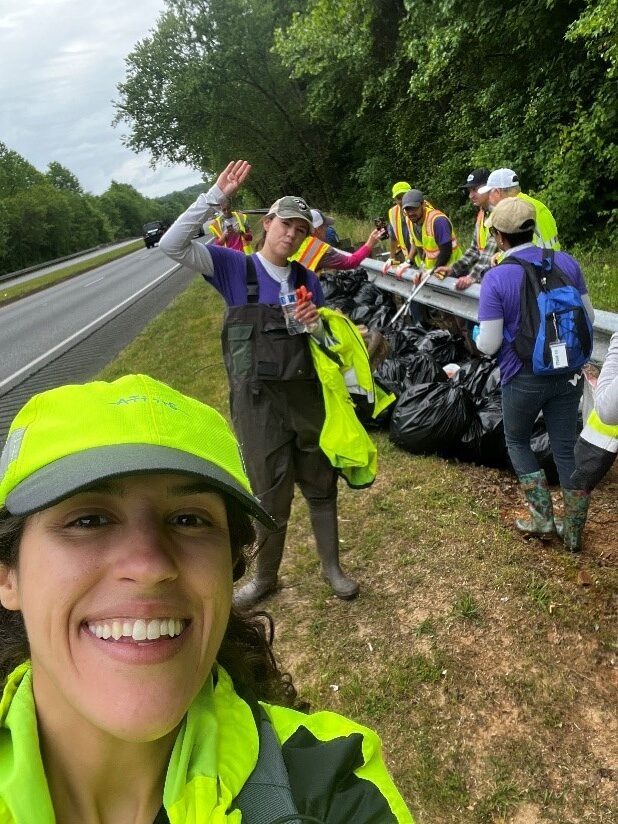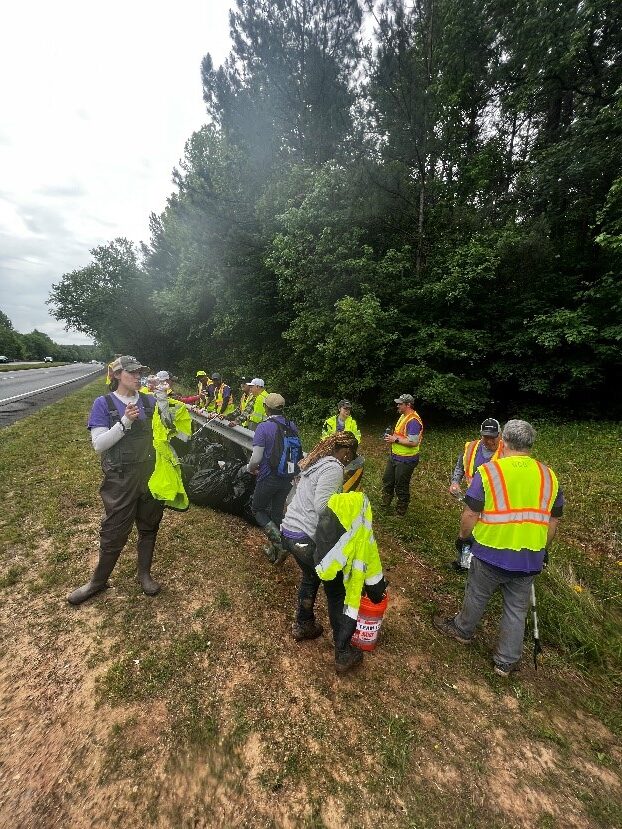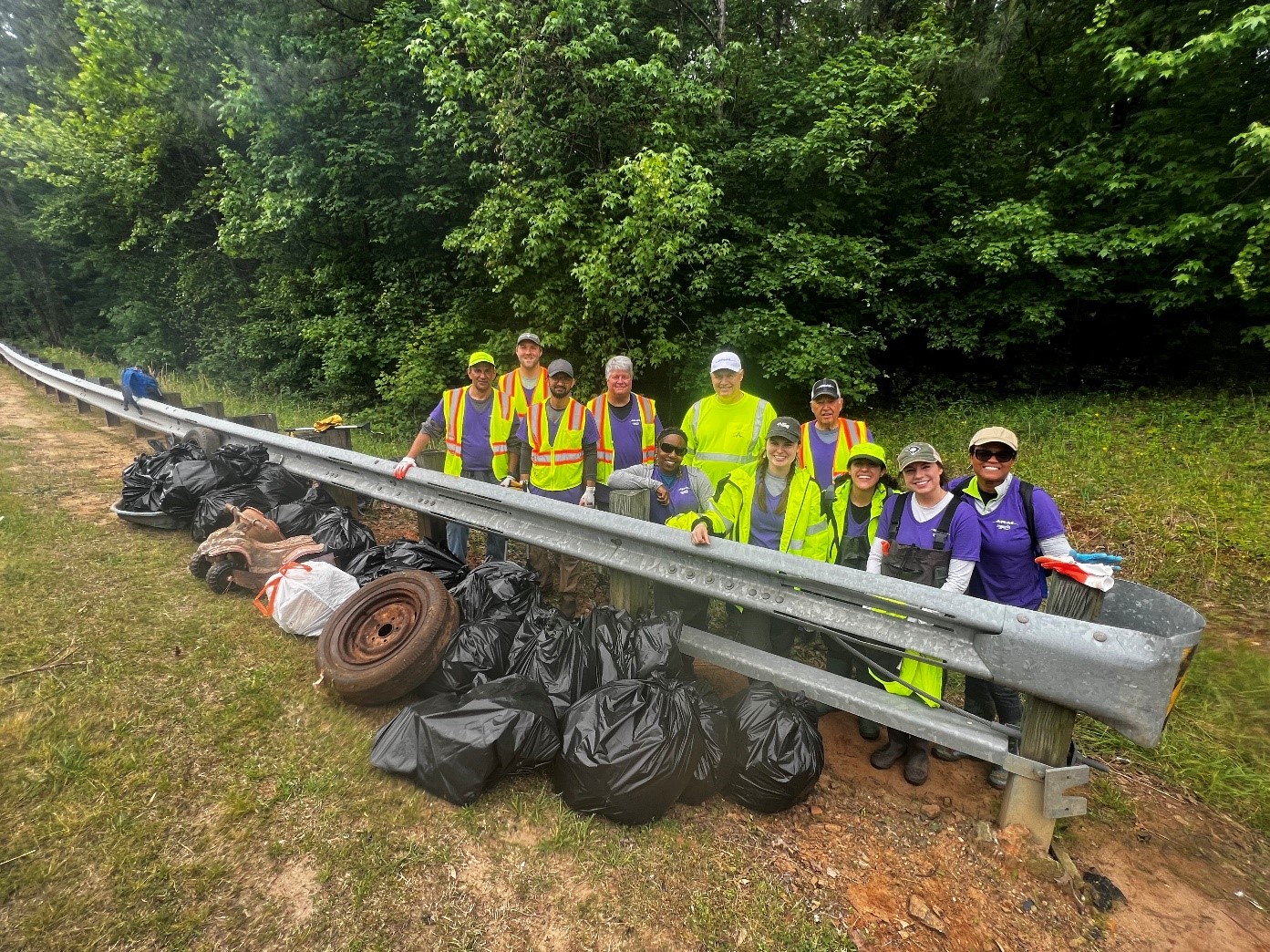Atlas volunteers from our Duluth, Ga., office pose next to a pile of refuse they collected at the ninth Great Gwinnett Wetlands Cleanup of Bethesda Park in Lawrenceville, an annual event hosted by Gwinnett Clean & Beautiful and its partners at the Gwinnett County Department of Water Resources.
At its pinnacle, the Isle de Jean Charles in coastal Louisiana harbored over 300 families across 22,000 acres of marshland.
But in the span of 50 years, almost 90 percent of the landscape went underwater, forcing residents to migrate toward the mainland.
Factors like rising sea levels, coastal erosion, and over-exploitation of resources continue to threaten historic island communities. In fact, the Bayou State loses about one football field’s worth of land per hour to the sea and has shrunk 2,000 square miles in less than a century.
Inland wetlands on the other hand face threats like widespread agriculture, invasive species, and pollution.
In total, the world has lost 35 percent of all wetlands since 1970.
They’re disappearing three times faster than forests.
Why it Matters
- Coral reefs as well as ‘blue-carbon’ wetlands such as mangroves and seagrasses provide cost-effective disaster-risk reduction solutions to protect communities against storm surges.
- Inland ecosystems, such as peatlands and rivers absorb excess water to prevent floods and drought.
- Wetlands can retain significant percentages of pollutants such as nitrates, ammonium, and phosphorus.
- In the US, more than one-third of all threatened and endangered species live exclusively in wetlands.
- Water purification and waste treatment, flood control and storm protection, carbon storage and sequestration, fisheries, and recreational opportunities provided by wetlands are globally valued at $47 trillion a year.
The EPA launched American Wetlands Month in 1991 to raise annual awareness about the most biologically diverse and fragile ecosystems in the world. You don’t have to be a policymaker or stakeholder to help combat flood risk and land loss…
Just search for upcoming local volunteering events or organize your own and assemble a good group of colleagues to accompany you.
From the Everglades to the ecosystems in our own backyards, we all have the power to help restore segments of our environment.


